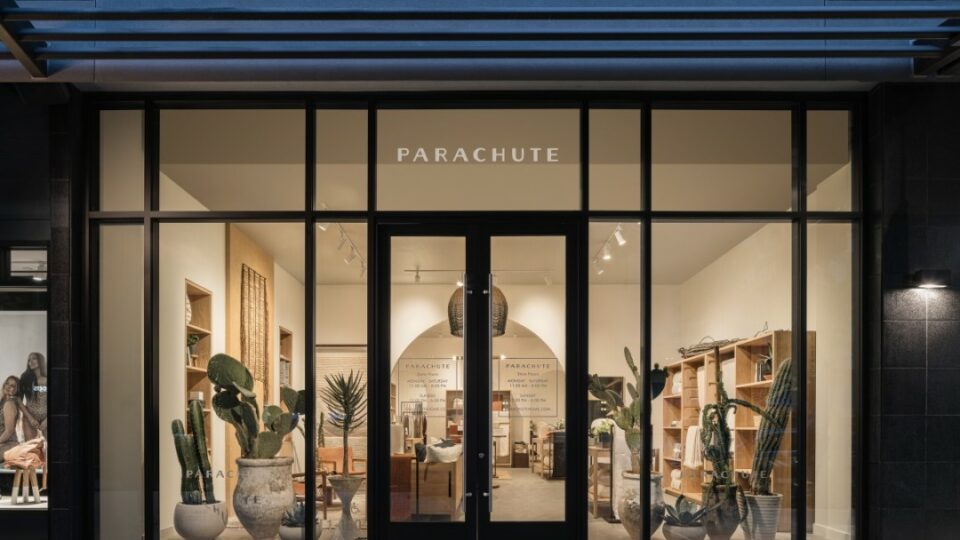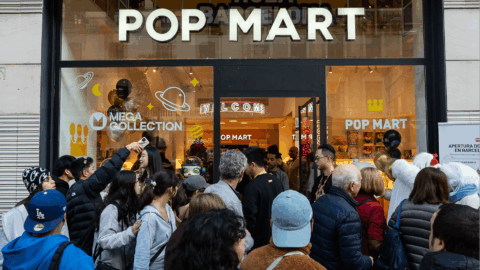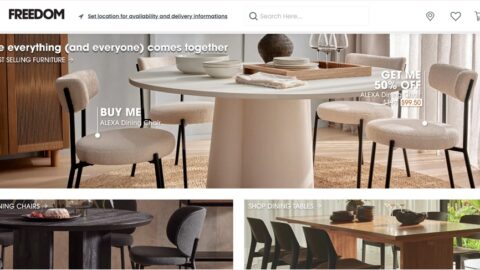Since its inception in 2014, Parachute has aimed to provide comfortable, high-quality home products at an affordable price point. Accelerated by the pandemic’s ecommerce surge, Parachute saw demand rise and, in turn, realized an opportunity for expansion.
That’s why Founder and CEO Ariel Kaye has spent the last year building out her executive leadership team, with one of her key appointments being Drew Sheriff, who took the helm as Chief Commercial Officer in November 2021. With previous experience at Amazon and Starbucks, Sheriff has been tasked with expanding Parachute’s physical presence as it simultaneously expands into new categories — from bath to furniture and even loungewear. (Comfy clothes help make a comfy home, right?)
Parachute plans to double its physical store footprint and reach 30 operational stores by the end of 2022. To help the company reach this goal, Sheriff is ensuring that Parachute remains true to its mission and keeps the brand that online shoppers know and love alive.
“We opened our first store in 2016, so physical retail has always been part of the strategy for our brand to grow,” explained Sheriff during a session at the Retail Innovation Conference & Expo. But as the brand has expanded its store count (there were 17 Parachute locations at the time of the session in May 2022), Sheriff and his team uncovered six learnings that have helped Parachute build its brand and translate a powerful digital presence to physical stores.
Learn more about Parachute’s growth story by listening to this episode of Retail Remix with Founder and CEO Ariel Kaye!
Lesson 1: Understand Your Brand to Tell a Story
Sheriff believes that developing a brand story is the foundational exercise that all teams should go through. “This is one of those deceptively simple assignments that I’ve done almost every year for every company I’ve worked at,” he said. “What I’ve found over time is as companies go really fast, different stakeholders and leaders have a different perception of what a brand stands for. Getting together and synched, putting everything in writing, and making sure you’re monitoring year over year is an incredibly valuable exercise. It sometimes illuminates the disconnects and sometimes it reinforces what you stand for.”
Action: Write down three or four phrases that describe your company. Then, build more detailed statements that define your business.
Lesson 2: Translate Your Online Brand to the Store
Parachute’s long-term vision is to offer high-quality products for every room of the home, Sheriff explained. All digital platforms and stores aim to fulfill this vision by creating an aesthetic of comfort, relaxation and everyday luxury.
“We want our website and stores to have a very similar feel,” said Sheriff. “As we started designing our stores, we looked at our own social media feeds, our own in-house creative studio and some of our most-loved imagery that showed how our products had come to life.”
But this translation isn’t just to ensure the aesthetic is consistent. Digital images of living rooms, bathrooms and bedrooms create more context behind the products and stores are designed to provide the same, if not more, detail. For example, Parachute stores have running water in bathroom vignettes so shoppers can test towel absorbency.
Action: Ensure consistency by aligning your in-store brand aesthetic to that of your online brand. Brainstorm how you can bring your digital content to life by adding more interactive elements and opportunities to touch, feel and test products.
Advertisement
Lesson 3: Understand and Engage Your Consumer
Furniture and home shoppers span all ages, but Parachute has found that its target customer is largely millennials. As a result, the brand has focused on understanding this specific audience and how they browse and buy.
“We have a customer insights function at Parachute that spends a lot of time going through qualitative and quantitative data,” Sheriff said. “Then, we need to make decisions based on that onsite and in-store behavior.”
For example, the Parachute team found that Millennials are 57% more likely to buy products recommended by influencers and just as many find sustainability to be important or very important while shopping. Parachute has leveraged these insights to implement a hyper-local influencer strategy that allows them to host dinners and educate these tastemakers about their brand mission and actions around sustainability.
Action: Conduct deep customer research and analysis to understand what makes your target audience tick. What channels do they use? What influences them and drives their behaviors? Leverage these insights to guide your approach to marketing, customer service and engagement across all channels.
Lesson 4: Embrace the Power of Store Placement
To reach its store-opening goals, Parachute is prioritizing highly populated markets. However, the brand also is exploring opportunities in new cities based on the mix of brands and retailers in those areas.
“When you expand into retail stores, you want to use all the datasets you have, including online sales, mobility data and traffic data,” Sheriff said. “But if you’re just starting off, you should really put a premium on co-tenancy. When I joined the company, we did an exhaustive list of all the co-tenants we would love to be next to because they drive traffic. We created a simple formula for ourselves and how we rank locations using that co-tenancy as one of the filters, and then as we got more stores to inform what worked well, we refined that algorithm.”
However, Parachute also considers the unique characteristics of spaces to ensure that the overall visual design aligns with the brand. “There’s the science of thinking the location should be based on the math and our performance, but the art is finding the location and the curb appeal for the store,” Sheriff explained. For example, one of the brand’s newest stores in Pasadena, Calif., is in a vintage building that had an aesthetic that was unique and fit well with the brand. “We’re looking for more locations like that across streets, but we also want to ensure we have an identifiable aesthetic. If all our storefronts look a little different, that’s a tension point we have to work through.”
Action: Prioritize markets based on the demographics of your key online shoppers. Then, prioritize spaces that have co-tenants that align with your customers’ behaviors and preferences.
Lesson 5: Connect with Customers’ Communities
Although Parachute has a foundational design aesthetic, Sheriff noted that all stores include a nod to local communities, whether it be through plants, artwork or partnerships. For example, the art featured in the Charlotte, N.C. store was created by Kenny Nguyen, a Charlotte-based artist.
“From a design perspective, we try to balance local touches with that identifiable aesthetic,” Sheriff explained. Even components that are in every store have local distinctions. For example, the tile used in a fireplace for a store in Pasadena will look vastly different from the fireplace in the Scottsdale, Ariz. location.
Sheriff added: “You’re able to make decisions on this micro level in the store that make it feel appropriate for the market it’s in. That’s how we’re trying to thread the needle between local and national from a footprint perspective.”
Action: Tap into what makes each community unique to add a local flair to your stores. Regional influences and design elements can help you better connect with specific demographics, while remaining true to your brand.
Lesson 6: Treat Your Stores as More Than Just Another Sales Channel
Parachute has maintained an NPS score of over 90 for its retail channel and Sheriff attributes this success to the brand’s approach to tying digital engagement to physical service.
“When we open a store in a new market, we see our online conversion go up by 50%,” Sheriff revealed. “We’re also seeing that the lifetime value of customers who shop with us both online and offline, across categories, is 7X higher than our single-channel and single-category purchaser.”
Parachute’s product categories are a natural fit for omnichannel behaviors. Before someone buys a couch, for example, they may want to see it in person, even sit on it. But Sheriff noted that online customers who use Parachute’s in-store styling services convert at 60%-plus, and those conversions have approximately a 3X larger basket size.
Action: Leverage the “halo effect” to drive long-term engagement and loyalty creation. Explore the value of added services to build customer trust and create connectivity between your digital channels and physical experiences.















